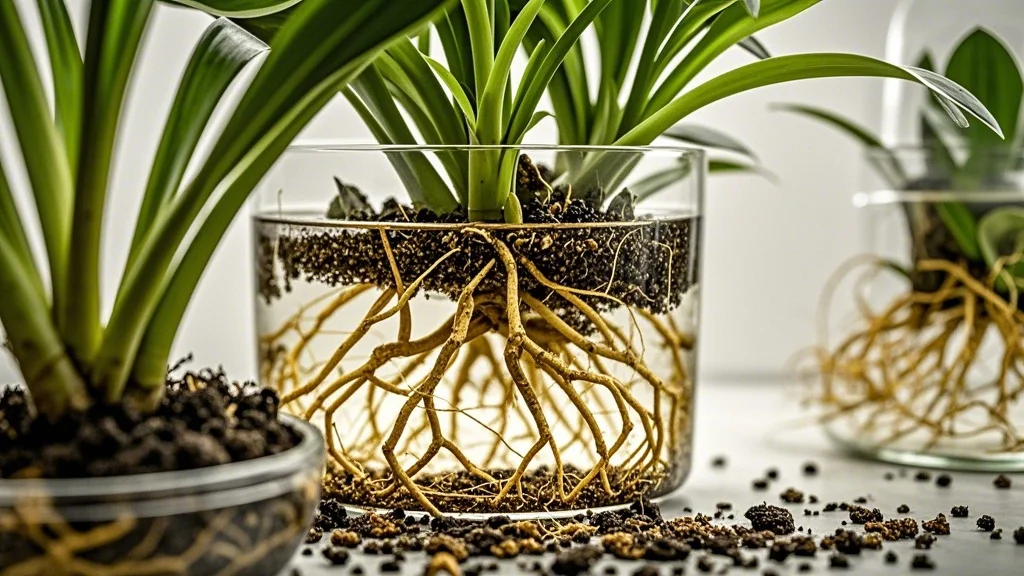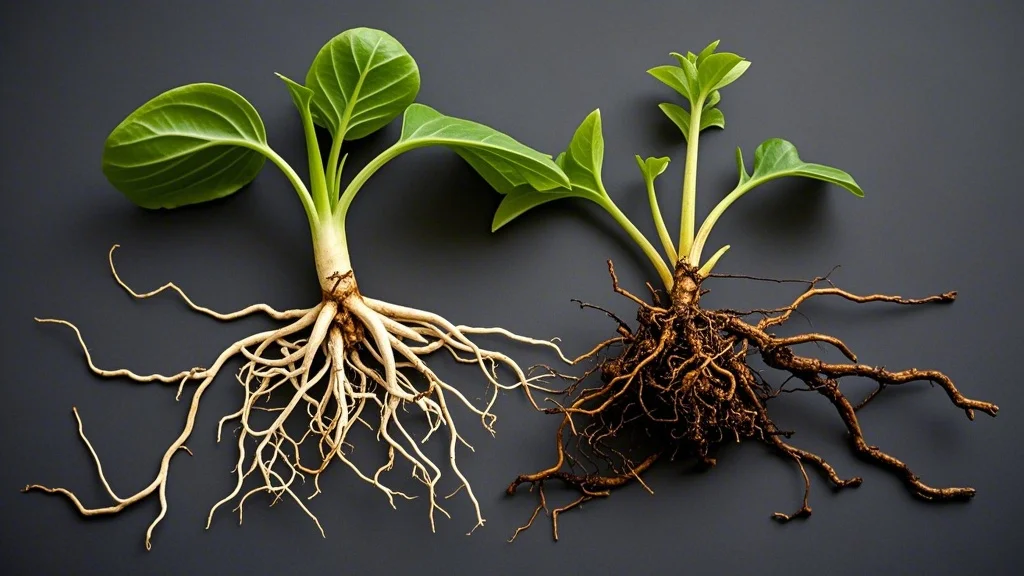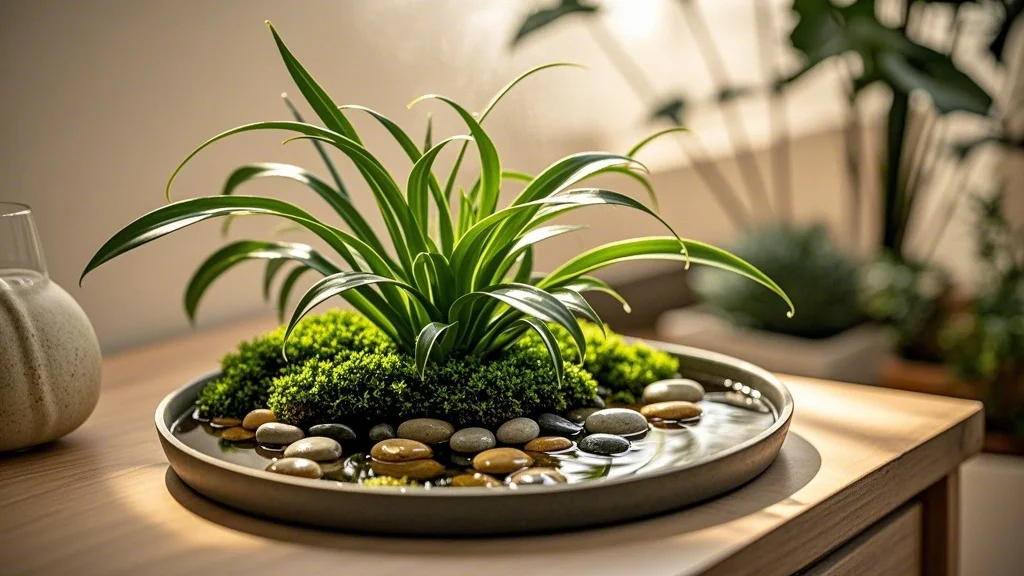Contents
- 1 Understanding the Root Health Product Landscape
- 2 The Science of Root Development
- 3 Categories of Root Health Products
- 4 Factors Affecting Supplement Effectiveness
- 5 Common Root Problems and Effective Solutions
- 6 The Evidence Gap: Marketing vs. Reality
- 7 Cost-Benefit Analysis: Are Root Supplements Worth It?
- 8 DIY Alternatives to Commercial Products
- 9 Best Practices for Using Root Health Supplements
- 10 Conclusion: Evidence-Based Recommendations
- 11 References and Further Reading
Understanding the Root Health Product Landscape
For urban gardeners tending to houseplants in small apartments or technical growers managing complex indoor setups, root health often determines the difference between thriving plants and disappointing failures. The market is flooded with products promising stronger, healthier roots—from rooting hormones and mycorrhizal fungi to specialized fertilizers and “root boosters.” But behind the marketing claims and attractive packaging lies the fundamental question: do these products actually deliver measurable benefits?
This evidence-based analysis examines the science behind root health supplements, evaluates their effectiveness, and helps you determine which products merit a place in your plant care regimen.
The Science of Root Development

Before evaluating supplements, it’s essential to understand how roots naturally develop and function. Plant roots serve several critical purposes:
- Anchoring the plant in growing medium
- Absorbing water and nutrients
- Storing energy reserves
- Interacting with beneficial soil microorganisms
- Sensing environmental conditions
Root development is regulated by complex hormonal interactions, primarily involving auxins, cytokinins, and ethylene. These natural plant hormones control root initiation, elongation, and branching patterns. Most commercial root supplements attempt to enhance or modify these natural processes.
Categories of Root Health Products
1. Rooting Hormones
What they are: Products containing synthetic auxins like indole-3-butyric acid (IBA) or naphthaleneacetic acid (NAA) that stimulate root formation in cuttings.
Scientific evidence: Extensive research supports the effectiveness of auxin-based rooting hormones, particularly for difficult-to-root species. A study published in HortScience demonstrated that IBA treatments increased rooting percentage by 35-60% in woody ornamental cuttings compared to untreated controls.
Effectiveness rating: ★★★★☆ (4/5)
Best for: Propagating cuttings, especially from woody or semi-woody plants.
Product example: Clonex Rooting Gel contains IBA in a gel formulation that adheres well to cuttings and provides consistent results across many plant species.
2. Mycorrhizal Fungi Inoculants
What they are: Products containing beneficial fungi that form symbiotic relationships with plant roots, extending their reach and enhancing nutrient uptake.
Scientific evidence: Research consistently shows mycorrhizal fungi can improve nutrient absorption, particularly phosphorus. However, effectiveness varies significantly based on:
- Plant species (some plants form these relationships more readily)
- Existing soil microbial populations
- Growing conditions
A meta-analysis in New Phytologist examining 90 studies found mycorrhizal inoculation increased plant biomass by an average of 23%, but results ranged from negligible to dramatic improvements.
Effectiveness rating: ★★★☆☆ (3/5)
Best for: Plants grown in sterile media or soilless mixes that lack natural microbial populations.
Product example: Great White Premium Mycorrhizae contains 15 species of mycorrhizal fungi along with beneficial bacteria, providing broad-spectrum support for various plant types.
3. Beneficial Bacteria Products
What they are: Formulations containing rhizobacteria that colonize the root zone and provide benefits like nitrogen fixation, pathogen suppression, and hormone production.
Scientific evidence: Plant growth-promoting rhizobacteria (PGPR) have demonstrated benefits in numerous studies. Research in the Journal of Plant Nutrition showed certain Bacillus strains increased root mass by 17-22% in controlled studies. However, product quality varies widely, and living bacteria require proper storage and application.
Effectiveness rating: ★★★☆☆ (3/5)
Best for: Improving nutrient cycling in container plants and boosting overall root zone health.
Product example: Microbe Life Photosynthesis Plus contains multiple bacterial species that support root function through various mechanisms.
4. Seaweed/Kelp Extracts
What they are: Products derived from marine algae containing plant growth regulators, trace minerals, and complex carbohydrates.
Scientific evidence: Research shows seaweed extracts contain natural cytokinins, auxins, and other bioactive compounds that can stimulate root development. A study in the Journal of Applied Phycology found that kelp extract applications increased root growth by 40% in tomato seedlings. Benefits appear most pronounced during stress conditions.
Effectiveness rating: ★★★★☆ (4/5)
Best for: General root system enhancement and stress recovery.
Product example: Maxicrop Liquid Seaweed is a concentrated kelp extract that provides a broad spectrum of trace elements and natural growth regulators.
5. Humic and Fulvic Acids
What they are: Complex organic compounds derived from decomposed plant matter that improve soil structure and nutrient availability.
Scientific evidence: Research indicates these substances can enhance root development indirectly by improving nutrient uptake and soil conditions. A study in Plant and Soil found humic acid applications increased root length by 15-25% in container-grown plants. Effects are most noticeable in poor or depleted growing media.
Effectiveness rating: ★★★☆☆ (3/5)
Best for: Improving nutrient availability in container plants and enhancing overall root environment.
Product example: General Hydroponics BioThrive contains humic acids derived from leonardite that help chelate nutrients and improve their availability to plant roots.
6. Silicon Supplements
What they are: Products containing bioavailable silicon, which strengthens cell walls and may enhance root development.
Scientific evidence: Research in the Journal of Plant Nutrition demonstrated that silicon supplementation increased root mass by 15-30% in certain plant species and improved resistance to root pathogens. Benefits appear most significant under stress conditions.
Effectiveness rating: ★★★☆☆ (3/5)
Best for: Strengthening roots against environmental stresses and pathogen pressure.
Product example: Botanicare Silica Blast provides potassium silicate that strengthens cell walls and improves overall plant resilience.
Factors Affecting Supplement Effectiveness
The efficacy of root health products depends significantly on several factors:
Growing Medium Characteristics
Products perform differently depending on the properties of your growing medium:
-
Soil-based media: Natural soils already contain many beneficial microorganisms, potentially reducing the impact of microbial inoculants.
-
Soilless media: Sterile media like coco coir or peat-based mixes may benefit more from microbial additions.
-
Hydroponic systems: Some supplements are specifically formulated for soilless applications, while others may disrupt system balance.
Plant Species and Growth Stage
Different plants have varying responses to root supplements:
- Woody plants often respond well to rooting hormones during propagation
- Certain plant families form mycorrhizal associations more readily than others
- specimens
Application Method and Timing
Even effective products can fail when improperly applied:
- Many living microbial products require specific temperature ranges and handling protocols
- Hormone concentrations that benefit one plant may damage another
- Some products work best preventatively, while others are designed for corrective treatment
Common Root Problems and Effective Solutions

Root Rot
Causes: Overwatering, poor drainage, pathogenic fungi (Pythium, Phytophthora, Rhizoctonia)
Effective treatments:
- Hydrogen peroxide solutions (3%) can help oxygenate the root zone
- Beneficial Trichoderma fungi products show strong evidence for suppressing pathogenic fungi
- Copper-based fungicides for severe cases
Product recommendation: Southern Ag Garden Friendly Fungicide contains Bacillus subtilis strain QST 713, which has demonstrated effectiveness against root pathogens in multiple studies.
Poor Root Development
Causes: Compacted media, nutrient imbalances, improper pH, temperature stress
Effective treatments:
- Enzyme products that break down dead root matter
- Mycorrhizal fungi to extend effective root surface area
- Seaweed extracts to provide natural growth regulators
Product recommendation: Roots Organics Trinity combines enzymes, beneficial microbes, and humic acids to address multiple aspects of poor root development.
Transplant Shock
Causes: Root damage, environmental change, water stress during transplanting
Effective treatments:
- Vitamin B1 (thiamine) products show mixed results in research but may help sensitive species
- Mycorrhizal fungi applied at transplanting
- Seaweed extracts to reduce transplant stress
Product recommendation: SUPERthrive contains vitamins and plant hormones that can help reduce transplant shock in sensitive plants.
The Evidence Gap: Marketing vs. Reality
While many root supplements show promise in controlled studies, several issues complicate real-world application:
-
Limited independent testing: Many products lack third-party verification of their claims
-
Shelf stability concerns: Living microbial products may lose viability during storage
-
Concentration inconsistencies: Active ingredient levels can vary between batches
-
Synergistic effects: Products may perform differently when combined with other treatments
Cost-Benefit Analysis: Are Root Supplements Worth It?
When evaluating root health products, consider these economic factors:
-
Plant value: Expensive or rare specimens may justify premium treatments
-
Problem severity: Preventative products often cost less than treating established issues
-
Application frequency: Some products require regular reapplication, increasing total cost
-
Alternative approaches: Cultural practices like proper watering and media selection may provide greater benefits than supplements
DIY Alternatives to Commercial Products
For budget-conscious growers, several homemade alternatives show scientific promise:
Willow Water Rooting Solution
How to make it: Soak chopped willow (Salix spp.) twigs in water for 24-48 hours.
Scientific basis: Willow contains natural salicylic acid and indolebutyric acid that promote rooting. Research in the Journal of Plant Growth Regulation found willow water increased rooting percentage by 15-30% compared to plain water.
Lentil Sprout Enzyme Solution
How to make it: Blend sprouted lentils with water and strain the liquid.
Scientific basis: Sprouted seeds contain high levels of enzymes and natural growth regulators. A study in HortScience demonstrated that lentil sprout solutions increased rooting in cuttings by approximately 20%.
Compost Tea
How to make it: Steep finished compost in water with aeration for 24-48 hours.
Scientific basis: Properly made compost tea contains beneficial microorganisms that can colonize the root zone. Research shows variable results depending on compost quality and brewing methods.
Best Practices for Using Root Health Supplements
To maximize effectiveness and avoid wasting money on ineffective products:
-
Start with proper cultural practices: No supplement can overcome fundamental issues like overwatering or inappropriate growing media
-
Target specific problems: Choose products designed for your particular issue rather than general “root boosters”
-
Follow storage instructions: Many biological products lose effectiveness if improperly stored
-
Document results: Keep records of treatments and outcomes to determine which products actually work for your specific plants
-
Consider controlled testing: Try treating only some plants to compare results against untreated controls
Conclusion: Evidence-Based Recommendations
Based on current scientific evidence, these root health supplements offer the best value for urban gardeners:
-
For propagation: Auxin-based rooting hormones have the strongest research support and consistently improve success rates for cuttings
-
For general root health: Seaweed/kelp extracts provide a broad spectrum of benefits with minimal risk of harm
-
For poor soil conditions: Mycorrhizal fungi products can significantly improve nutrient uptake, particularly in sterile media
-
For stress recovery: Silicon supplements help strengthen roots against environmental challenges and pathogen pressure
Remember that even the best supplements cannot replace fundamental care practices. Proper watering, appropriate light levels, and suitable growing media remain the foundation of root health.
By approaching root supplements with a critical eye and realistic expectations, urban gardeners can make informed decisions about which products deserve a place in their plant care arsenal—and which promises are just marketing hype.
References and Further Reading
- Calvo, P., Nelson, L., & Kloepper, J. W. (2014). Agricultural uses of plant biostimulants. Plant and Soil, 383(1-2), 3-41.
- Rouphael, Y., & Colla, G. (2020). Editorial: Biostimulants in Agriculture. Frontiers in Plant Science, 11, 40.
- Van Oosten, M. J., Pepe, O., De Pascale, S., Silletti, S., & Maggio, A. (2017). The role of biostimulants and bioeffectors as alleviators of abiotic stress in crop plants. Chemical and Biological Technologies in Agriculture, 4(1), 5.
- Yakhin, O. I., Lubyanov, A. A., Yakhin, I. A., & Brown, P. H. (2017). Biostimulants in plant science: A global perspective. Frontiers in Plant Science, 7, 2049.







